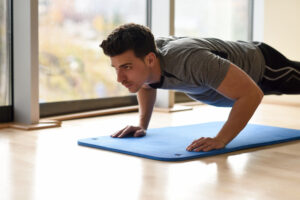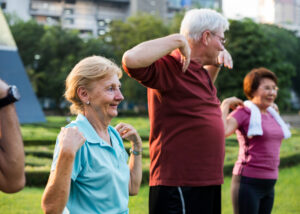Losing fat can be a challenging journey; however, with the right exercises and mindset, it becomes manageable and even enjoyable. Whether your goal is to slim down for health reasons, boost your fitness level, or simply feel more energetic and confident, fat burning exercises are the key. This guide will walk you through the best types of workouts to help you burn fat efficiently, explain why they work, and provide practical tips to help you stay motivated and consistent. You don’t need fancy equipment or a gym membership to get started. Just a bit of knowledge and determination is enough!
Why Focus on Fat Burning Exercises?
Fat burning exercises are designed to increase your metabolism, boost calorie burn, and help your body utilize stored fat for energy. When you exercise, your body burns calories from carbohydrates and fat. More importantly, the right types of exercise can maximize fat oxidation, which means your body uses more fat as fuel. Moreover, exercising regularly helps preserve muscle mass, which is essential because muscle tissue burns more calories at rest than fat tissue.
It’s important to understand that fat loss is not about quick fixes or extreme diets. Instead, sustainable fat loss comes from combining effective workouts with proper nutrition and lifestyle habits. Exercises that increase your heart rate and engage multiple muscle groups will help you burn calories both during and after your workout through what’s called the “afterburn effect” or excess post-exercise oxygen consumption (EPOC).
The Science Behind Fat Burning
When you work out, your body first uses glycogen (carbohydrates stored in muscles and liver) as the main energy source. Then, as exercise continues, it shifts to burning fat, especially during moderate intensity. This is called the “fat-burning heart rate zone,” usually 60-70% of your maximum heart rate.

However, higher-intensity workouts, like High-Intensity Interval Training (HIIT), have been shown to burn more total calories and fat overall—even though the fat-burning zone is technically lower—since they boost your metabolic rate for hours after the workout.
Types of Fat Burning Exercises
Cardiovascular Training
Cardio exercises increase your heart rate and breathing, helping to burn calories and improve heart and lung health. Common cardio workouts include running, cycling, swimming, brisk walking, and dancing.
- Steady-State Cardio: This involves maintaining a consistent, moderate intensity for a prolonged time (e.g., jogging for 45 minutes). It primarily uses fat as fuel and improves endurance.
- High-Intensity Interval Training (HIIT): Alternates short bursts of maximum effort with rest or low-intensity periods. For example, sprint for 30 seconds, walk for 1 minute, and repeat. HIIT is very time-efficient and elevates calorie burn post-exercise.
Strength Training
Building muscle not only strengthens your body but also helps you burn more calories throughout the day, even when you’re not exercising. This includes lifting weights, using resistance bands, or bodyweight exercises like push-ups, squats, and lunges.
Furthermore, strength training helps preserve lean muscle mass during calorie deficit, enhances metabolic rate, and improves body composition and tone.
Circuit Training
Circuit training combines strength and cardio by performing a series of exercises back-to-back with minimal rest. It keeps your heart rate elevated while building muscle and burning calories. A typical circuit might include squats, push-ups, jumping jacks, and planks repeated 3-4 times.
Functional Training
This focuses on exercises that mimic everyday movements to improve strength, balance, and flexibility. Examples include kettlebell swings, medicine ball throws, and TRX training. Functional training can be very effective for fat loss as it uses multiple muscle groups simultaneously.
Sample Fat Burning Workout Plan
Beginner Routine (3 Days a Week):
- Warm-up: 5 minutes brisk walk or light jog
- Circuit (Repeat 3 times):
- 15 Bodyweight Squats
- 10 Push-ups (modify on knees if needed)
- 20 Jumping Jacks
- 15 Walking Lunges (each leg)
- 30-second Plank
- Cool down: Stretch for 5 minutes
Intermediate Routine (4-5 Days a Week):
- Warm-up: 10 minutes light cardio
- HIIT session:
- 30 seconds sprint
- 60 seconds walk
- Repeat 8 times
- Strength Training:
- Dumbbell or resistance band exercises for all major muscle groups (3 sets of 12 reps each)
- Core work:
- Bicycle crunches, leg raises, Russian twists (3 sets of 15 reps each)
- Cool down and stretch
Nutrition Tips to Support Fat Burning
Exercise alone is not enough to lose fat effectively. Nutrition plays a crucial role in your results.
- Firstly, eat enough protein to preserve muscle mass and keep you full longer. Aim for lean sources like chicken, fish, tofu, legumes, and eggs.
- Also, balance your macros by including healthy fats—like avocados, nuts, and olive oil—and complex carbs, such as whole grains and vegetables, to fuel workouts and recovery.
- Moreover, stay hydrated by drinking water before, during, and after exercise.
- Finally, limit processed foods, sugary drinks, fried foods, and excessive alcohol.
Common Mistakes to Avoid
Some common errors can derail your fat loss progress:
- Overtraining: Exercising too intensely without rest can lead to injury and burnout.
- Ignoring Strength Training: Many focus only on cardio but neglect building muscle, which is vital for long-term fat loss.
- Skipping Meals or Crash Dieting: This slows metabolism and can cause muscle loss.
- Inconsistency: Regular workouts and healthy eating are key; one-off efforts won’t bring lasting results.
The Role of Rest and Recovery
Muscle growth and fat loss happen during recovery, not just during exercise. Make sure to get:
- 7-9 hours of quality sleep per night
- Rest days between intense workouts
- Active recovery like yoga, stretching, or walking
Tracking Progress
Keep a journal or use fitness apps to track:
- Workouts completed
- Body measurements and weight (don’t rely only on the scale!)
- How you feel physically and mentally
Tracking helps you stay motivated and adjust your program as needed.

Motivation and Mindset
Changing your body takes time and patience. Celebrate small victories, like increased energy or improved endurance. Additionally, find workout buddies, join classes, or listen to motivating music. Remember: consistency beats perfection.
When to Consult a Professional
If you have any health concerns, injuries, or medical conditions, consult your doctor before starting a new workout program. A certified personal trainer can design a safe, effective routine tailored to your needs.
Your Next Steps Toward Fat Loss Success
Fat burning exercises boost your health, fitness, and confidence. Combining cardio, strength, and proper nutrition helps you lose fat sustainably. Start today, stay consistent, and enjoy the process! For motivation tips, see our article on How to Stay Motivated for Fitness.

What’s Your Favorite Fat Burning Exercise?
Share your go-to workouts, tips, or questions in the comments below! Let’s build a supportive community to help everyone reach their fitness goals.
Sources
Mayo Clinic – In their comprehensive article on weight management and fat loss, Mayo Clinic explains how a combination of regular physical activity and a balanced diet is essential for effective fat burning and sustainable weight loss. They highlight the role of aerobic and strength exercises in boosting metabolism and improving body composition.
https://www.mayoclinic.org/healthy-lifestyle/weight-loss/in-depth/weight-loss/art-20047752
American Council on Exercise (ACE) – ACE publishes research-backed guidelines emphasizing the effectiveness of High-Intensity Interval Training (HIIT) and strength training for fat burning. Their resources explain how these workouts increase excess post-exercise oxygen consumption (EPOC), leading to prolonged calorie burn after exercise.
https://www.acefitness.org/education-and-resources/lifestyle/blog/7464/what-is-hiit-how-high-intensity-interval-training-works/
National Institute of Health (NIH) – This NIH resource explains the metabolic processes involved in fat loss, emphasizing the importance of exercise intensity and duration on fat oxidation and overall metabolism.
https://www.ncbi.nlm.nih.gov/pmc/articles/PMC3951958/





